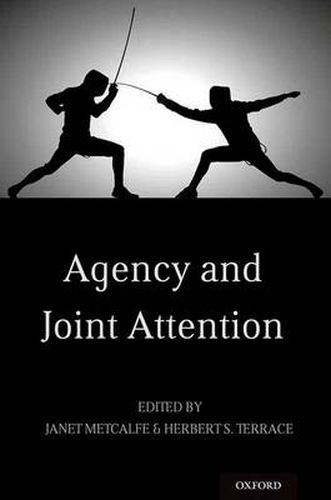Readings Newsletter
Become a Readings Member to make your shopping experience even easier.
Sign in or sign up for free!
You’re not far away from qualifying for FREE standard shipping within Australia
You’ve qualified for FREE standard shipping within Australia
The cart is loading…






Human infants do not seem to be born with concepts of self or joint attention. One basic goal of Agency and Joint Attention is to unravel how these abilities originate. One approach that has received a lot of recent attention is social. Some argue that by virtue of an infant’s intense eye gaze with her mother, she is able, by the age of four months, to establish a relationship with her mother that differentiates between me and you. At about twelve months, the infant acquires the non-verbal ability to share attention with her mother or other caregivers. Although the concepts of self and joint attention are nonverbal and uniquely human, the question remains, how do we establish metacognitive control of these abilities? A tangential question is whether nonhuman animals develop abilities that are analogous to self and joint attention.
Much of this volume is devoted to the development of metacognition of self and joint attention in experiments on the origin of consciousness, knowing oneself, social referencing, joint action, the neurological basis of joint attention, the role of joint action, mirror neurons, phenomenology, and cues for agency.
$9.00 standard shipping within Australia
FREE standard shipping within Australia for orders over $100.00
Express & International shipping calculated at checkout
Human infants do not seem to be born with concepts of self or joint attention. One basic goal of Agency and Joint Attention is to unravel how these abilities originate. One approach that has received a lot of recent attention is social. Some argue that by virtue of an infant’s intense eye gaze with her mother, she is able, by the age of four months, to establish a relationship with her mother that differentiates between me and you. At about twelve months, the infant acquires the non-verbal ability to share attention with her mother or other caregivers. Although the concepts of self and joint attention are nonverbal and uniquely human, the question remains, how do we establish metacognitive control of these abilities? A tangential question is whether nonhuman animals develop abilities that are analogous to self and joint attention.
Much of this volume is devoted to the development of metacognition of self and joint attention in experiments on the origin of consciousness, knowing oneself, social referencing, joint action, the neurological basis of joint attention, the role of joint action, mirror neurons, phenomenology, and cues for agency.